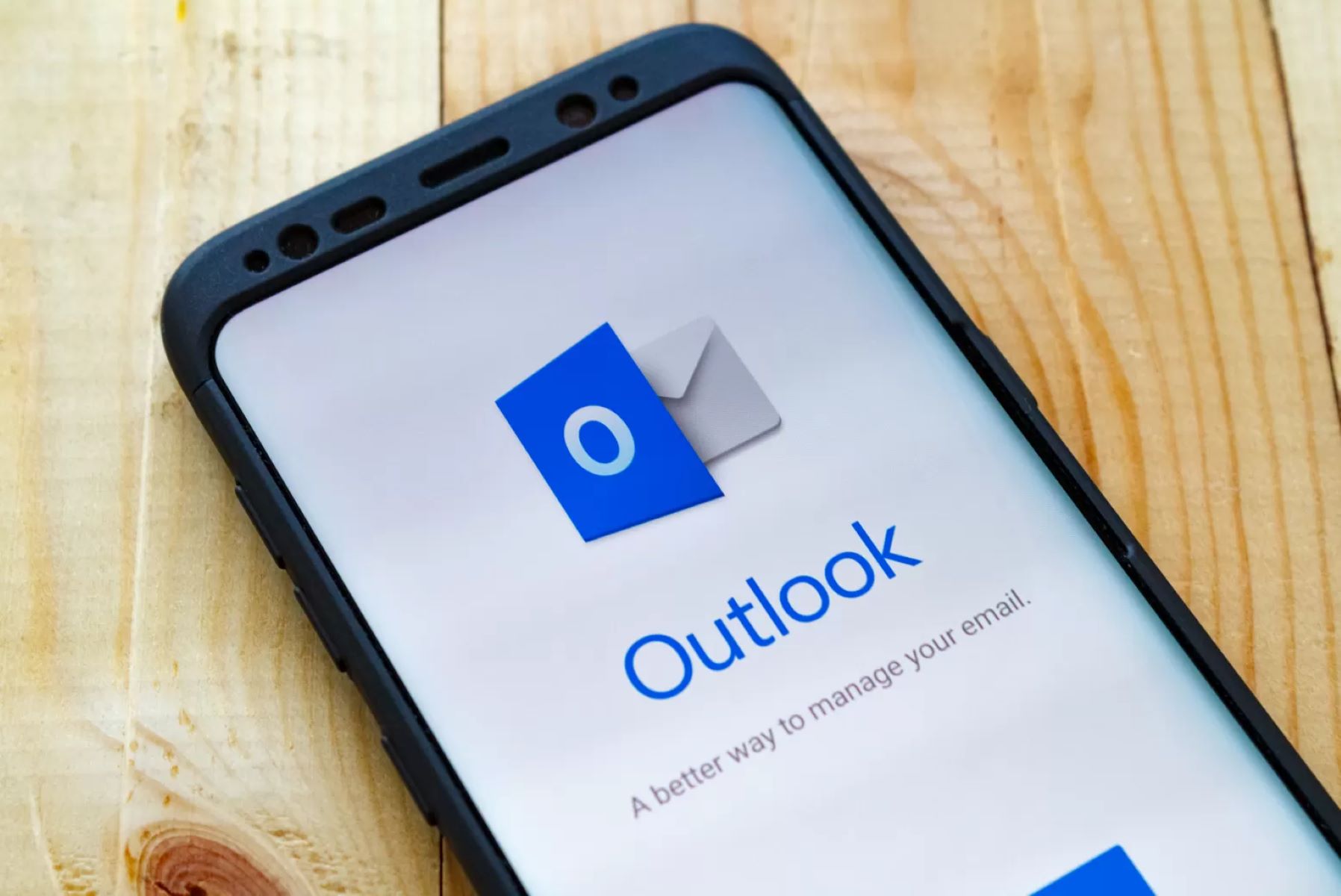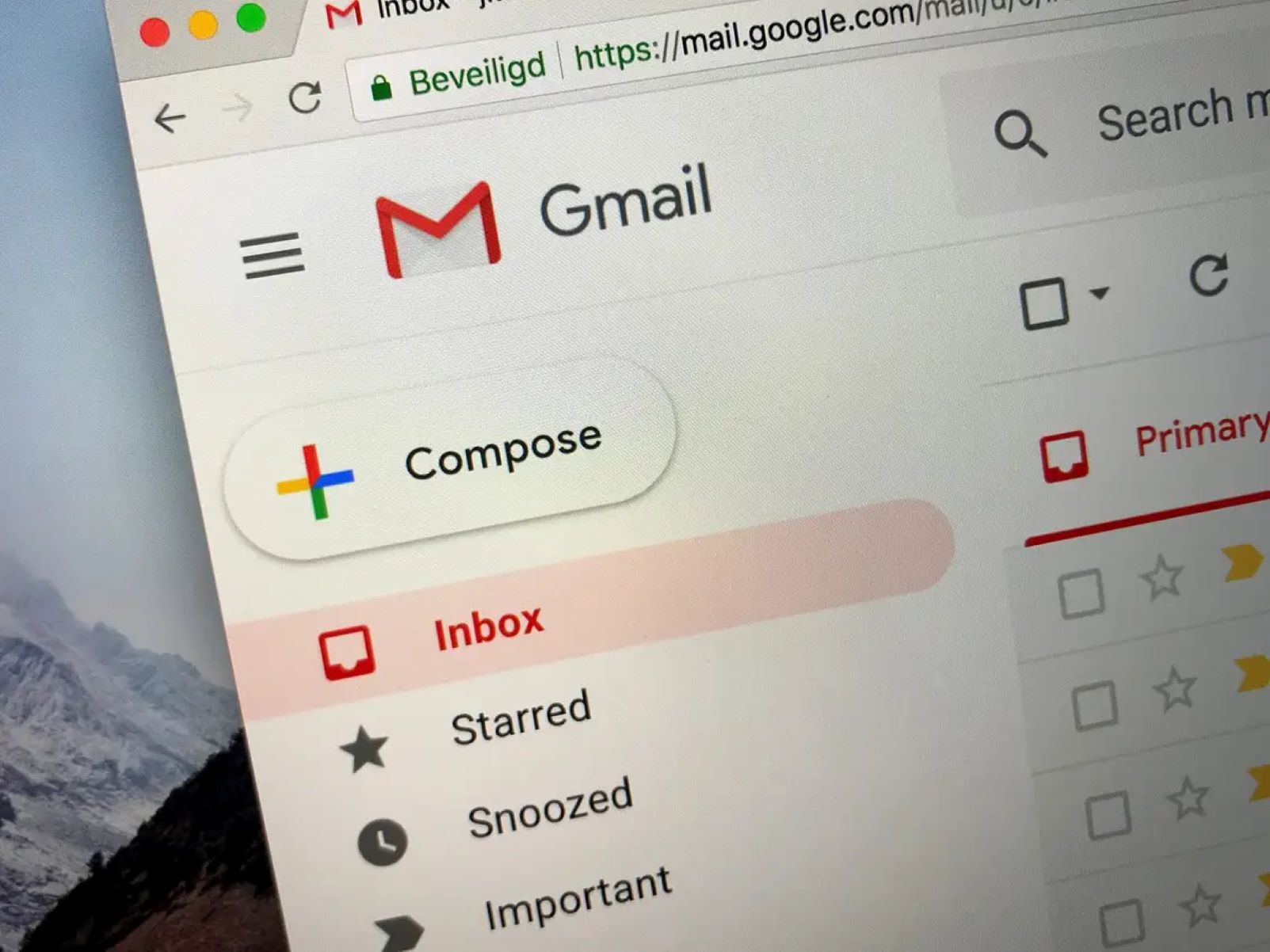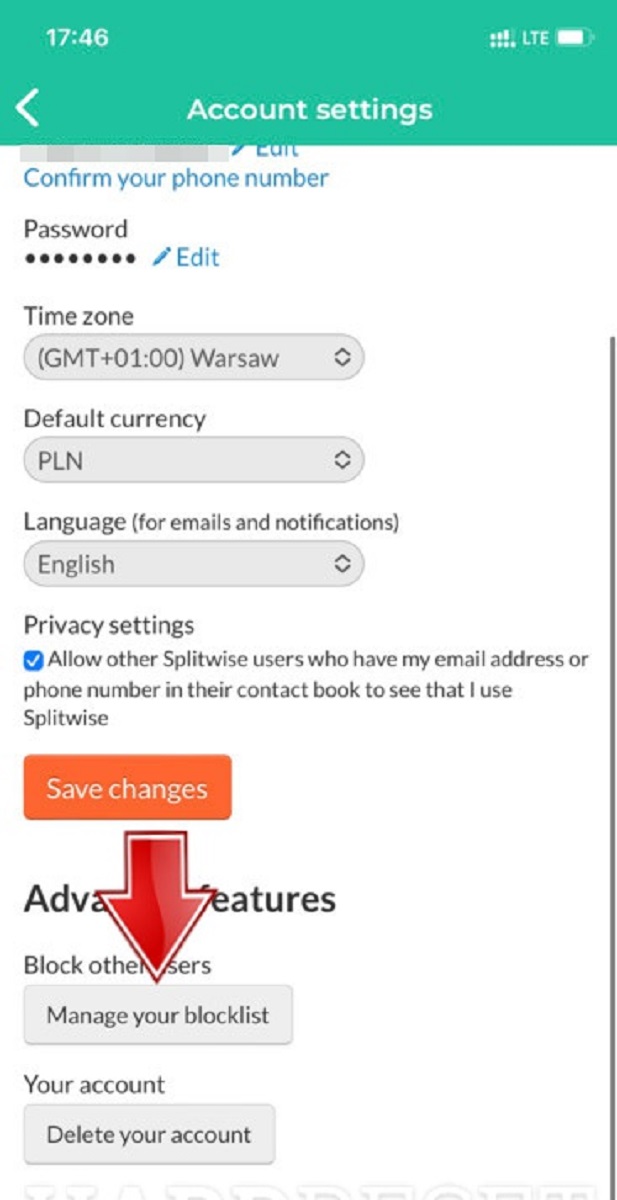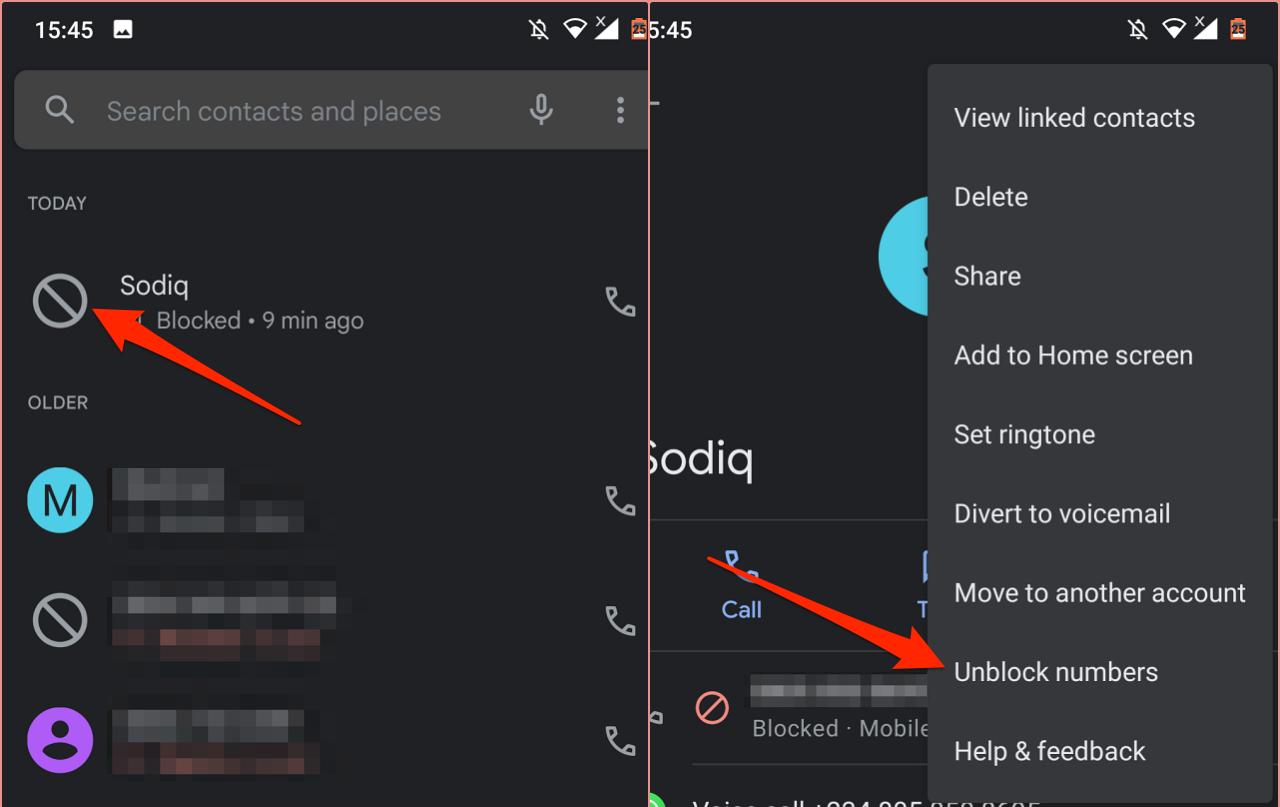Introduction
Welcome to this guide on how to unblock email on Outlook. Email blocking is a common feature in email providers to protect users from unwanted or spam email. However, sometimes legitimate emails may get mistakenly blocked, causing inconvenience and potentially missing out on important information. In this article, we will explore various methods to help you unblock email on Outlook and ensure that you receive all the emails you need.
Outlook is a widely used email client with powerful features and customizable settings. By following the methods outlined in this guide, you can navigate through the different settings in Outlook and make necessary adjustments to unblock emails from specific senders, domains, or keywords.
Whether you use Outlook for personal or business purposes, it is essential to have full control over your email flow. By unblocking emails, you can ensure that your inbox is not clogged with unnecessary junk or missed messages.
In the upcoming sections, we will explore various methods to unblock email on Outlook. We will cover steps to check and update the junk email settings, add senders to the safe senders list, remove senders from the blocked senders list, disable email forwarding rules, review and adjust email filters, check for blocked domains or keywords, review email quarantine or spam filters, and remove emails from the junk email folder.
Whether you are experiencing issues with a specific sender, finding important emails in the junk folder, or suspect that Outlook’s default settings may be blocking certain emails, this guide has got you covered. Follow along with each method, and before you know it, you will be able to receive all the emails you need without any interruptions.
Method 1: Check and Update Junk Email Settings
The first step in unblocking email on Outlook is to check and update the junk email settings. Outlook has built-in filters that automatically move suspicious or unwanted email to the junk folder. While this feature is helpful in managing spam, it can occasionally misclassify legitimate emails as junk.
To begin, open Outlook and navigate to the “Home” tab. Look for the “Junk” button in the top navigation menu and click on it. A dropdown menu will appear with several options.
Click on the “Junk E-mail Options” option. This will open a new dialog box with various settings related to junk email.
In the “Options” tab of the dialog box, you will find several checkboxes and settings that control how Outlook handles junk email. Make sure the “No Automatic Filtering” option is selected. This will disable automatic filtering of incoming email.
If you prefer to keep the automatic filtering enabled, you can adjust the sensitivity level of the filter by sliding the “Protection Level” slider. Moving it towards “Low” will decrease the strictness of the filter, while moving it towards “High” will increase the strictness.
Additionally, you can choose to permanently delete suspected junk email instead of moving it to the junk folder by checking the “Permanently delete suspected junk email instead of moving it to the Junk Email folder” option.
Once you have made the necessary changes, click on the “OK” button to save the settings. Outlook will now apply the updated junk email settings, which should help prevent legitimate emails from being blocked and sent to the junk folder.
It is important to periodically review and update your junk email settings in Outlook to ensure that it aligns with your preferences and correctly distinguishes between spam and legitimate emails.
By checking and updating the junk email settings, you have taken the first step in unblocking email on Outlook. However, if you are still experiencing issues receiving specific emails, continue with the next method to add the sender to the safe senders list.
Method 2: Add the Sender to Safe Senders List
One effective method to unblock email on Outlook is to add the sender to the safe senders list. By doing this, you are explicitly indicating to Outlook that you trust and want to receive emails from that particular sender, regardless of any filtering rules.
To add a sender to the safe senders list, start by opening Outlook and navigating to the “Home” tab. Look for the “Junk” button in the top navigation menu and click on it. From the dropdown menu, select “Junk E-mail Options.”
In the dialog box that appears, go to the “Safe Senders” tab. Here, you will see a text field where you can enter the email address or domain of the sender you want to add to the safe senders list.
You can add a specific email address by entering it completely (e.g., example@example.com). If you want to add an entire domain and receive emails from any sender within that domain, enter the domain without the @ symbol (e.g., example.com).
After entering the email address or domain, click on the “Add” button to add it to the safe senders list. The email address or domain will now be listed in the “Safe Senders and Recipients” section.
If you want to further customize the safety levels for the added sender, you can click on the “Advanced” button. This will open another dialog box where you can choose specific actions to take when receiving emails from this sender, such as moving them to a specific folder or marking them as read.
Once you have made the necessary changes, click on “OK” to save the settings. Outlook will now treat emails from the added sender or domain as safe and deliver them directly to your inbox, bypassing any filtering rules.
By adding the sender to the safe senders list, you are ensuring that you receive their emails without any interference from Outlook’s filters. However, if you are still facing issues with blocked emails, proceed to the next method to remove the sender from the blocked senders list.
Method 3: Remove the Sender from Blocked Senders List
If you find that a specific sender’s emails are being blocked by Outlook, you may need to remove them from the blocked senders list. The blocked senders list is a feature in Outlook that automatically sends emails from the listed senders to the junk folder or directly deletes them.
To remove a sender from the blocked senders list, open Outlook and go to the “Home” tab. Look for the “Junk” button in the top navigation menu and click on it. From the dropdown menu, choose “Junk E-mail Options.”
In the dialog box that appears, go to the “Blocked Senders” tab. Here, you will find a list of email addresses or domains that are currently blocked in Outlook.
Scroll through the list and locate the sender you want to unblock. Select the sender by clicking on it, and then click on the “Remove” button. This will remove the selected sender from the blocked senders list.
If you want to remove multiple senders at once, you can hold down the Ctrl key on your keyboard while selecting the senders, and then click on the “Remove” button to remove them all simultaneously.
After removing the sender from the blocked senders list, click on “OK” to save the changes. Outlook will now allow emails from the unblocked sender to reach your inbox normally.
It is important to periodically review and update the blocked senders list to ensure that you are not inadvertently blocking legitimate senders. By removing a sender from the blocked senders list, you are giving Outlook permission to deliver their emails directly to your inbox.
If you are still experiencing issues receiving emails from a particular sender, proceed to the next method to disable any email forwarding rules that may be interfering with email delivery.
Method 4: Disable Email Forwarding Rules
If you have set up email forwarding rules in Outlook, they may be affecting the delivery of certain emails. Email forwarding rules automatically redirect incoming emails to another email address or folder, which can sometimes lead to emails being blocked or not reaching your inbox.
To disable email forwarding rules, open Outlook and go to the “File” tab. From the dropdown menu, select “Options.”
In the Outlook Options window, click on the “Mail” category on the left-hand side. Look for the “Forwarding” section, where you will find options related to email forwarding.
If you have enabled email forwarding, make sure the “Disable forwarding” option is selected. This will ensure that any email forwarding rules you may have set up are deactivated.
Additionally, check for any specific email addresses or domains listed in the “Forwarding addresses” field. Remove any addresses that you no longer want emails to be forwarded to.
Once you have reviewed and made the necessary changes, click on “OK” to save the settings.
By disabling email forwarding rules, you are preventing any interference with the delivery of emails to your inbox. This allows you to receive all your emails directly without any redirection or blocking.
If you are still encountering issues with blocked emails, proceed to the next method to check for any blocked domains or keywords that may be causing the problem.
Method 5: Check for Blocked Domains or Keywords
In some cases, Outlook may be blocking emails from specific domains or containing certain keywords. By checking for blocked domains or keywords, you can identify and remove any restrictions that may be causing legitimate emails to be blocked.
To check for blocked domains or keywords, open Outlook and go to the “Home” tab. Look for the “Junk” button in the top navigation menu and click on it. From the dropdown menu, select “Junk E-mail Options.”
In the dialog box that appears, go to the “Blocked Senders” tab. Here, you will find a list of blocked email addresses and domains. Review the list and check if there are any domains that you would like to receive emails from.
If you want to unblock a specific domain, select it from the list and click on the “Remove” button. This will remove the domain from the blocked domains list, allowing emails from that domain to reach your inbox.
In addition to blocked domains, Outlook also provides an option to block emails containing specific keywords. To check for blocked keywords, go to the “Junk E-mail Options” dialog box, but this time, select the “Blocked Senders” tab.
In the “Blocked Senders” tab, you will find a section labeled “Blocked Keywords.” Review this section to see if there are any keywords that could be causing the blocking of certain emails.
If you identify a keyword that you want to unblock, select it from the list and click on the “Remove” button. Removing the keyword will prevent Outlook from blocking any emails that contain it.
After removing blocked domains or keywords, click on “OK” to save the changes. Outlook will now allow emails from these domains or containing these keywords to reach your inbox.
Regularly reviewing and updating the blocked domains and keywords list can ensure that legitimate emails are not mistakenly blocked by Outlook. By unblocking specific domains or keywords, you can have more control over the filtering of your emails and ensure that you receive the emails you need.
If you are still having issues with blocked emails, proceed to the next method to review and adjust your email filters.
Method 6: Review and Adjust Email Filters
Another method to unblock email on Outlook is to review and adjust your email filters. Outlook allows you to create custom filters that automatically sort incoming emails into specific folders or apply certain actions to them. However, these filters may sometimes mistakenly classify legitimate emails as spam or junk.
To review and adjust your email filters, open Outlook and go to the “File” tab. From the dropdown menu, select “Manage Rules & Alerts.”
In the Rules and Alerts window, you will find a list of your current email filters or rules. Review each rule and their associated conditions and actions. Look for any rules that could be inadvertently causing legitimate emails to be blocked or moved to unwanted folders.
If you identify a rule that may be causing issues, select it and click on the “Change Rule” button. This will allow you to modify or disable the selected rule.
To modify a rule, you can adjust the conditions, actions, or exceptions associated with it. For example, you can change the sender or keyword conditions to ensure that important emails are not impacted by the rule.
If you want to temporarily disable a rule without deleting it, uncheck the box next to the rule’s name. This will prevent the rule from being applied until you re-enable it.
After reviewing and adjusting your email filters, click on “OK” to save the changes. Outlook will now apply the modified filters based on your adjustments.
Regularly reviewing and adjusting your email filters can help prevent any unintentional blocking of legitimate emails. By fine-tuning the rules to align with your preferences, you can ensure that important emails make their way to your inbox.
If you are still facing issues with blocked emails, proceed to the next method to check for any email quarantine or spam filters.
Method 7: Check for Email Quarantine or Spam Filters
If you are still experiencing issues with blocked emails on Outlook, it is worth checking for any email quarantine or spam filters that may be causing the problem. Email quarantine or spam filters are additional layers of security that can sometimes mistakenly label legitimate emails as spam and prevent them from reaching your inbox.
To check for email quarantine or spam filters, you may need to consult with your email administrator or IT department if you are using Outlook in a professional or business setting. They will have access to the necessary tools and settings to review and adjust these filters.
If you are using Outlook for personal purposes and do not have an email administrator, you can still check for any available settings within the program itself.
Open Outlook and navigate to the “Home” tab. Look for the “Junk” button in the top navigation menu and click on it. From the dropdown menu, select “Junk E-mail Options.”
In the dialog box that appears, go to the “Options” tab. Look for any settings related to email quarantine or spam filters. There may be options to adjust the sensitivity level of the filter or to review emails that have been marked as spam.
If you find any relevant options, review and adjust them as necessary. This may involve decreasing the strictness of the filter or whitelisting certain email addresses or domains to ensure their delivery.
It is important to note that email quarantine or spam filters may also be implemented at the server level by your email provider. In such cases, you may need to access your email account settings or contact your email provider’s support for assistance in reviewing and adjusting these filters.
By checking for email quarantine or spam filters and making necessary adjustments, you can potentially resolve any issues with blocked emails on Outlook and ensure that legitimate messages make it to your inbox.
If you have completed the previous methods and are still facing problems with blocked emails, proceed to the next method to learn how to remove emails from the junk email folder.
Method 8: Remove Email from Junk Email Folder
If you are finding important emails in your junk email folder, it is essential to remove them from the folder to ensure that you do not miss any necessary information. Outlook’s junk email filter may sometimes mistakenly classify legitimate emails as spam and direct them to the junk folder.
To remove an email from the junk email folder, open Outlook and navigate to the “Home” tab. Look for the “Junk” button in the top navigation menu and click on it. From the dropdown menu, select “Junk E-mail.”
In the submenu that appears, choose the “Junk E-mail Options.” This will open a dialog box with various junk email settings.
Go to the “Options” tab in the dialog box. Look for the “Junk E-mail” section and find the “Choose the level of junk email protection you want” slider.
In this section, you can adjust the level of junk email protection. Moving the slider to a lower setting will decrease the strictness of the filter and potentially allow more emails to reach your inbox directly instead of being sent to the junk folder.
After adjusting the slider, click on the “OK” button to save the changes. Outlook will now apply the modified junk email settings.
Additionally, to remove specific emails from the junk email folder, open the folder itself by clicking on it in the left-hand sidebar of Outlook. Locate the email you want to remove and right-click on it.
In the context menu that appears, select the “Move” option, and then choose the “Inbox” or any other desired folder to move the email to. This action will move the selected email from the junk email folder to the designated folder.
By removing emails from the junk email folder, you can ensure that important messages are not overlooked or missed due to being wrongly classified as spam. It is recommended to regularly check and clean your junk email folder to avoid any information loss.
With these methods for unblocking email on Outlook, you should now have the tools and knowledge to resolve any issues related to blocked emails and ensure a smooth flow of communication in your inbox.
Conclusion
In conclusion, unblocking email on Outlook is crucial to ensure that you receive all the emails you need without any interruptions. By following the methods outlined in this guide, you can navigate through various settings and options in Outlook to address the issue of blocked emails.
We started by checking and updating the junk email settings, ensuring that Outlook’s automatic filtering does not mistakenly classify legitimate emails as spam. We then explored the method of adding senders to the safe senders list, indicating explicitly to Outlook that you trust and want to receive emails from them.
Next, we learned how to remove senders from the blocked senders list and disable email forwarding rules, which can inadvertently interfere with email delivery. We also checked for any blocked domains or keywords and modified the settings to allow emails from these sources.
Furthermore, we reviewed and adjusted email filters to avoid misclassification of legitimate emails as spam or junk. Additionally, we recommended checking for email quarantine or spam filters, either within Outlook or by consulting with the email administrator or IT department.
Lastly, we discussed the importance of removing emails from the junk email folder to prevent important messages from being overlooked.
By employing these methods, you can have full control over your email flow, ensuring that you receive all the necessary emails while minimizing the risk of missing out on important information.
Remember to periodically review and update your email settings to align with your preferences and needs. Stay proactive in managing your email filters, whitelist trusted senders, and regularly clean your junk email folder to maintain an organized and efficient inbox.
With these techniques at your disposal, you can unblock email on Outlook and enjoy seamless communication with your contacts. Happy emailing!

























